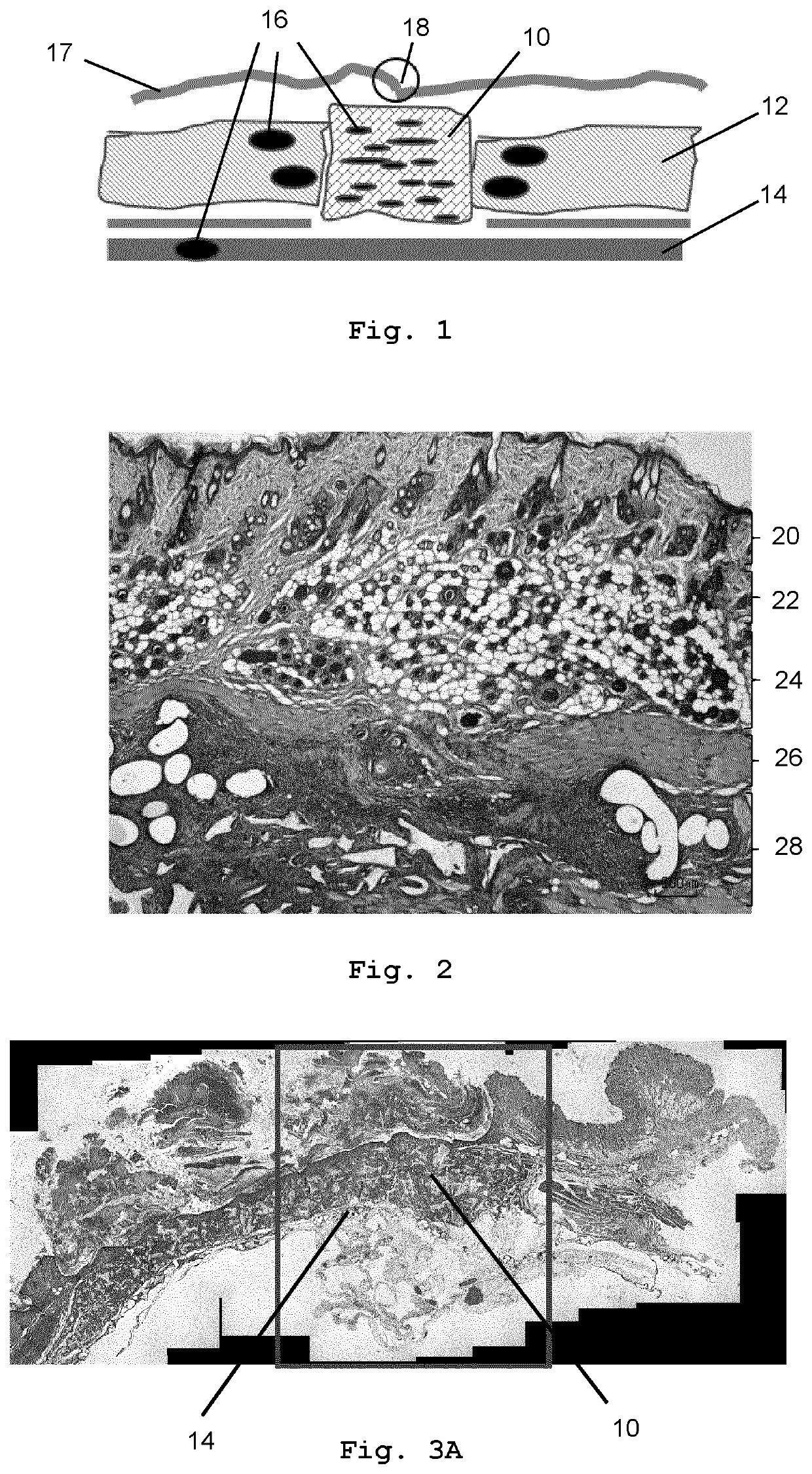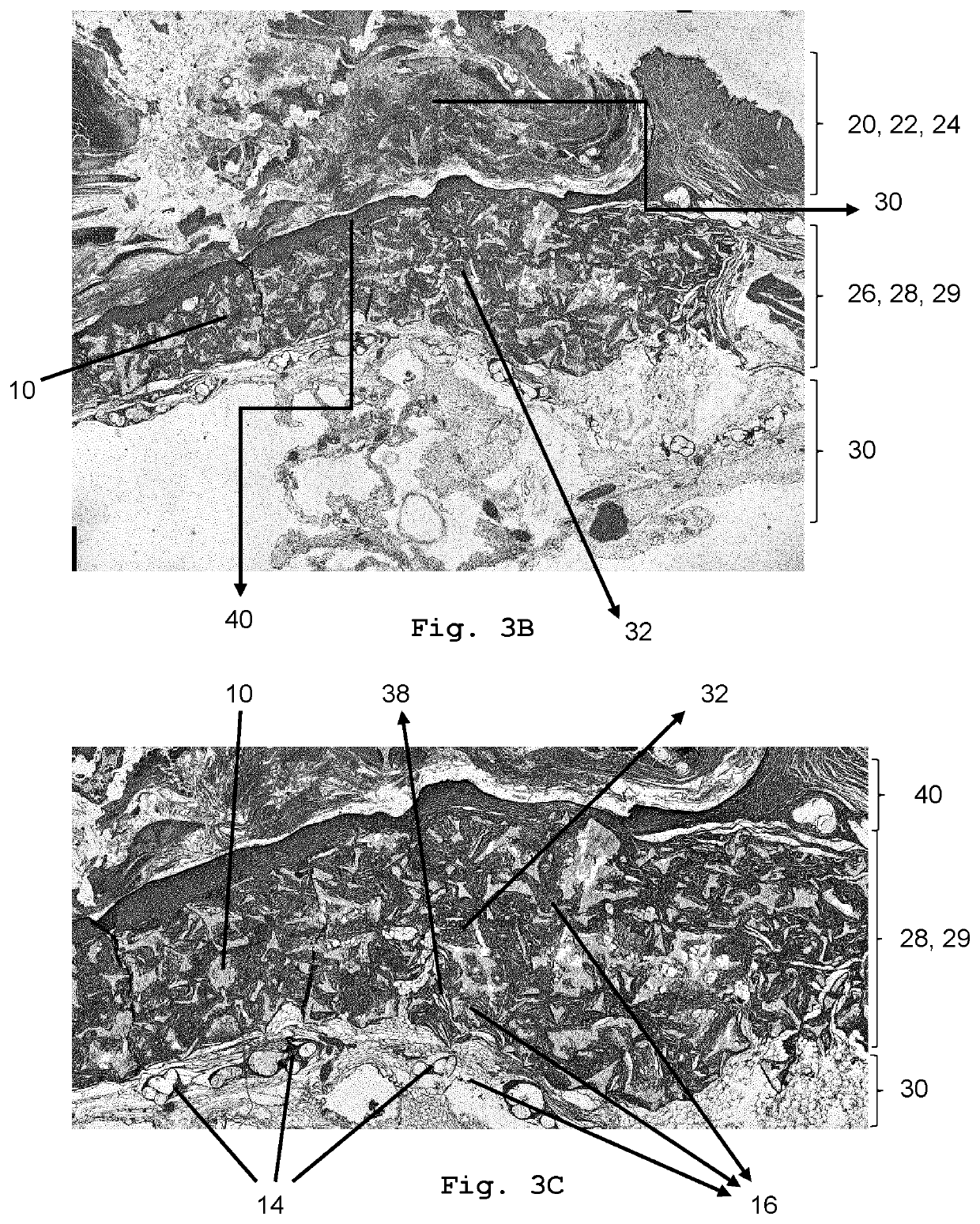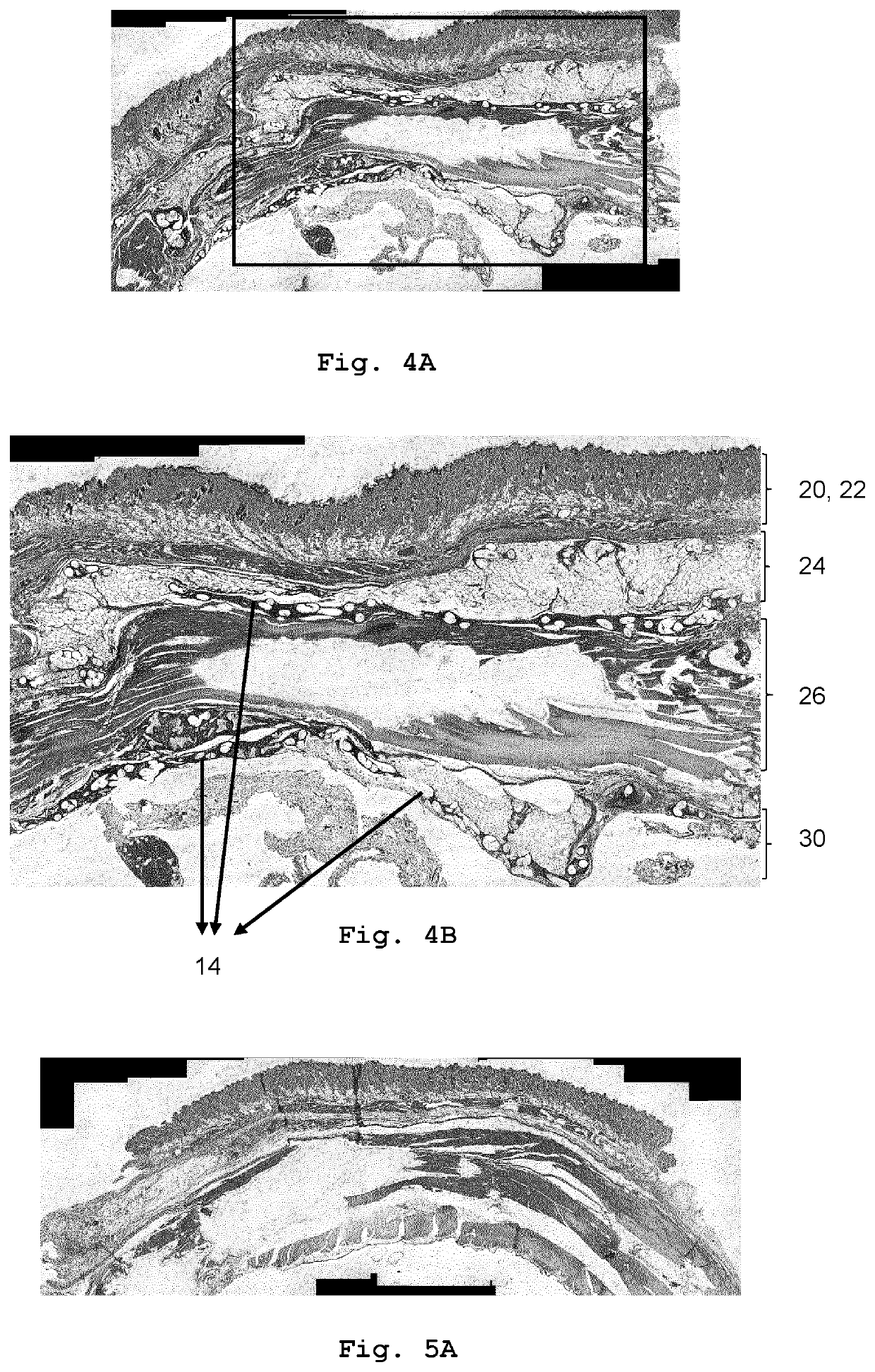Biodegradable Mesh Implant for Soft Tissue Repair
a biodegradable and mesh technology, applied in the field of biodegradable mesh implants, can solve the problems of introducing foreign materials into the human or animal body, affecting the healing of chronic wounds, and affecting the healing of patients, so as to promote cell penetration and adhesion, and promote tissue ingrowth.
- Summary
- Abstract
- Description
- Claims
- Application Information
AI Technical Summary
Benefits of technology
Problems solved by technology
Method used
Image
Examples
Embodiment Construction
[0023]Within the present application, the following definitions apply:
[0024]The term “biodegradable” means that the mesh can be absorbed over time if placed within a living organism, in which it is surrounded by body fluids.
[0025]The term “mesh”, as used throughout this application, refers to a three-dimensional support, i.e. a matrix, meaning a scaffold- or sponge-like structure, which is suitable for being colonized by cells. In this sense, the mesh serves as a three-dimensional template which can be colonized by cells or tissue. This colonization can take place in vitro or in vivo. Furthermore, the mesh serves, in connection with transplantations, for locating the transplant and also as a place holder for tissue which is gradually formed in vivo.
[0026]The term “porous” thereby refers to a structure comprising pores, i.e. cavities or void regions. These pores may have a round shape and / or an angular shape in a 2-dimensional section and / or a canted shape when seen 3-dimensionally. ...
PUM
| Property | Measurement | Unit |
|---|---|---|
| water contact angle | aaaaa | aaaaa |
| water contact angle | aaaaa | aaaaa |
| degradation time | aaaaa | aaaaa |
Abstract
Description
Claims
Application Information
 Login to View More
Login to View More - R&D
- Intellectual Property
- Life Sciences
- Materials
- Tech Scout
- Unparalleled Data Quality
- Higher Quality Content
- 60% Fewer Hallucinations
Browse by: Latest US Patents, China's latest patents, Technical Efficacy Thesaurus, Application Domain, Technology Topic, Popular Technical Reports.
© 2025 PatSnap. All rights reserved.Legal|Privacy policy|Modern Slavery Act Transparency Statement|Sitemap|About US| Contact US: help@patsnap.com



